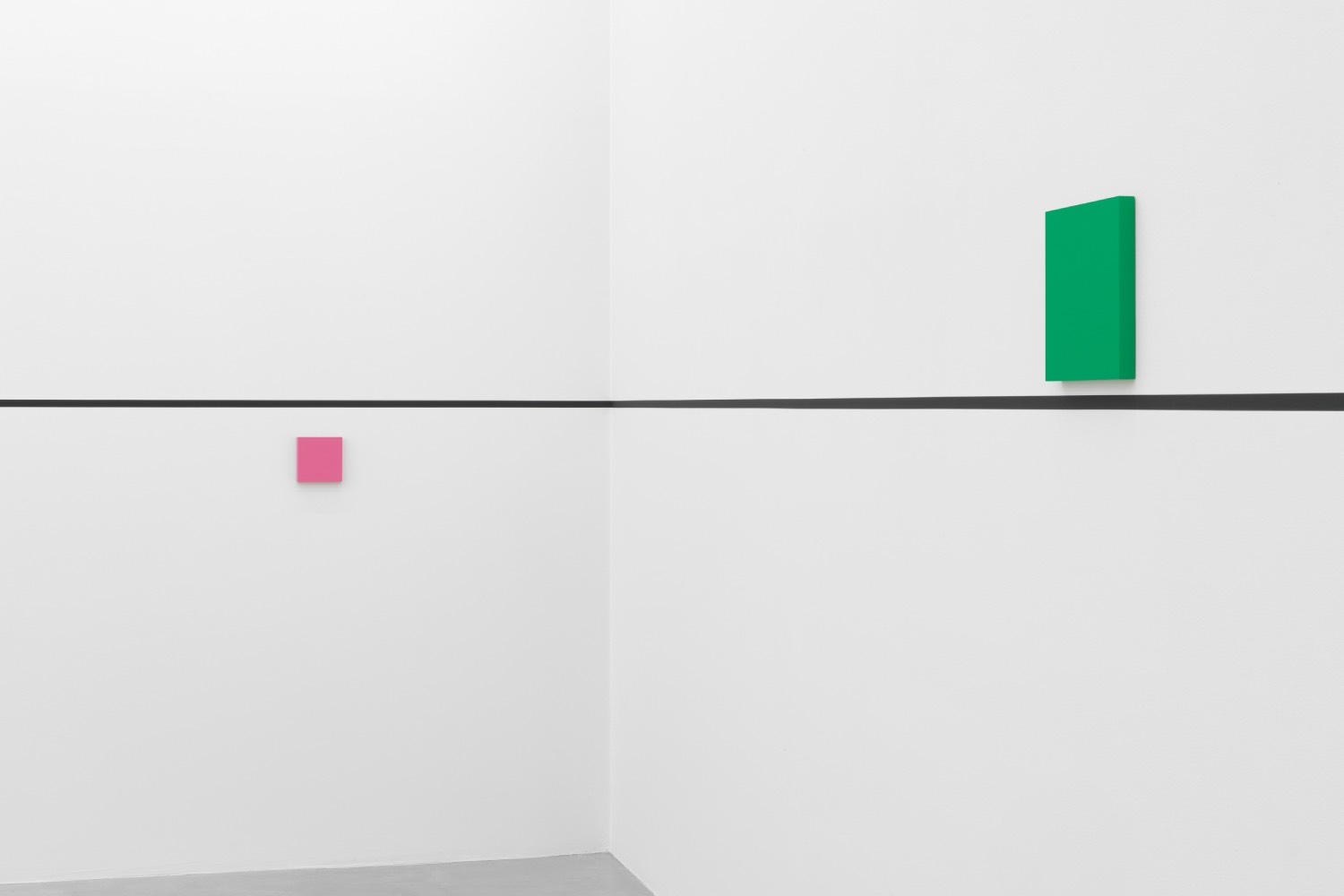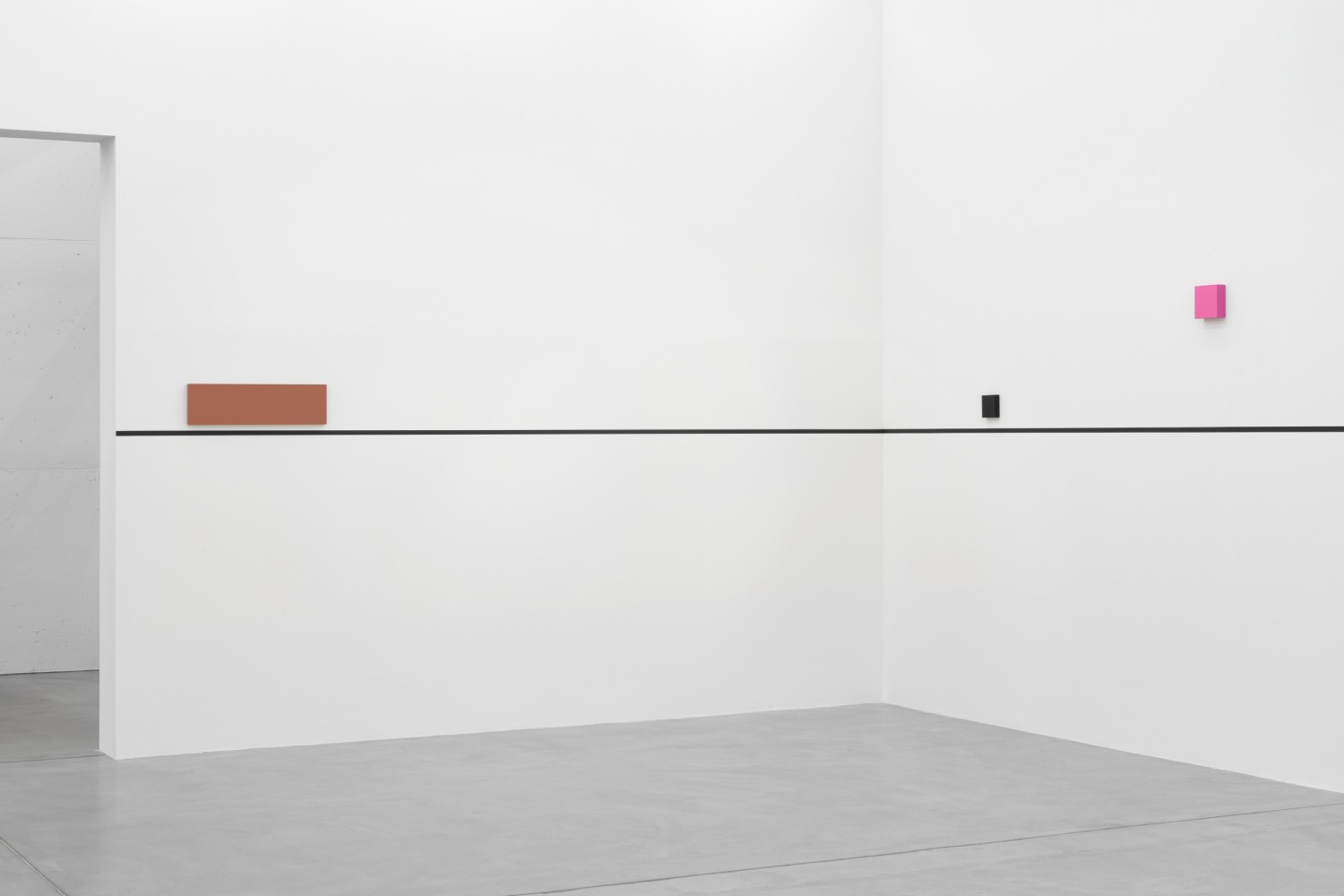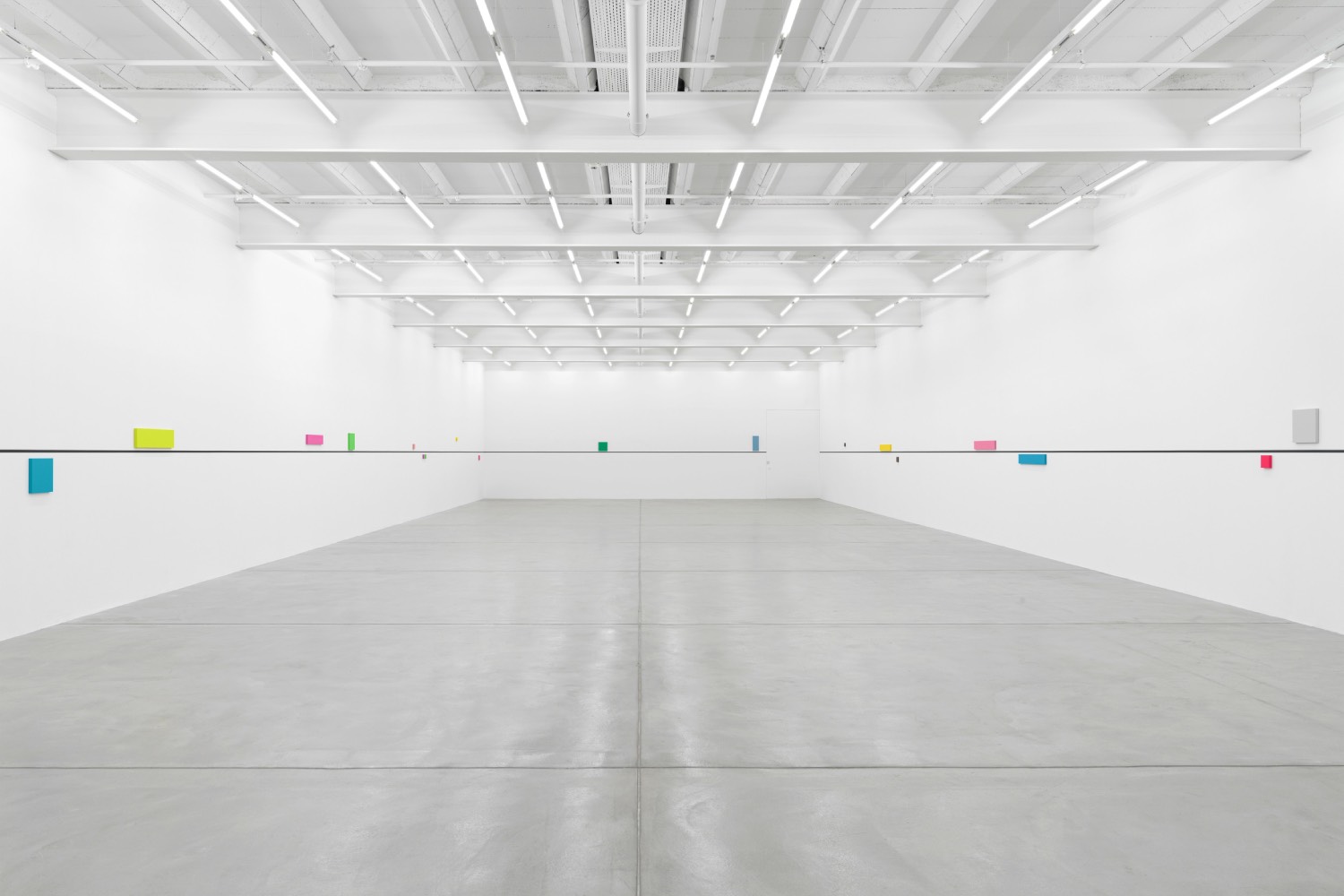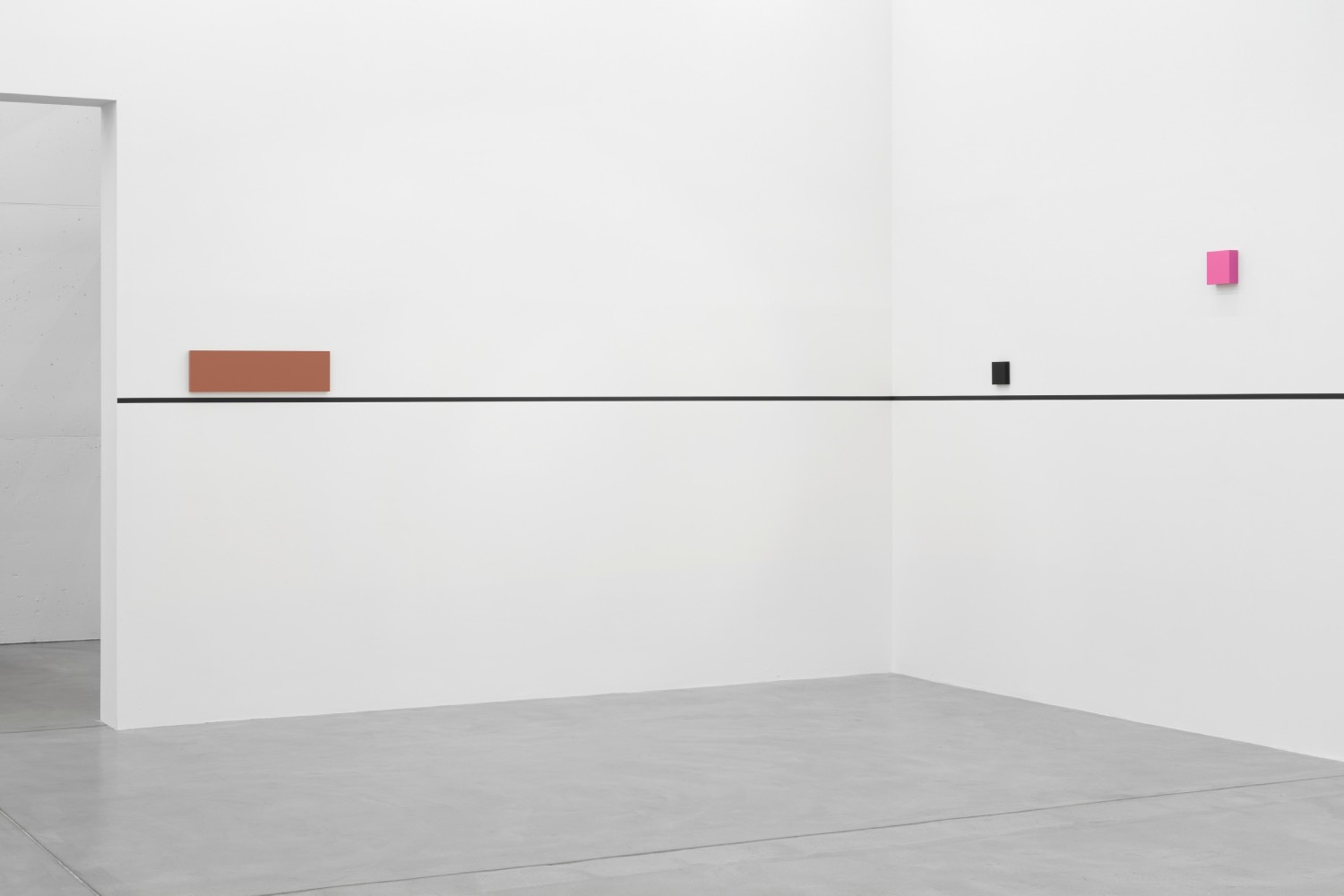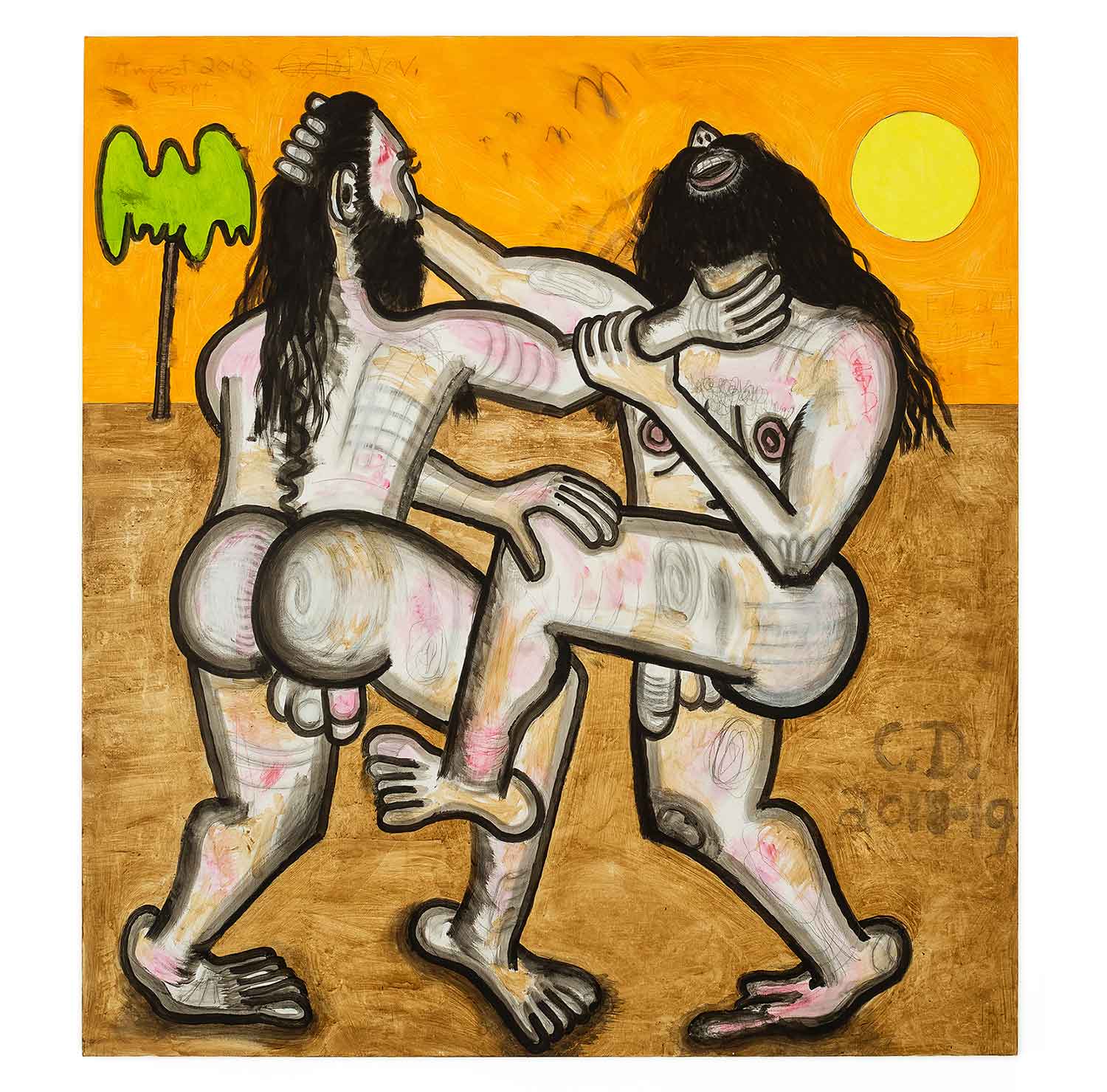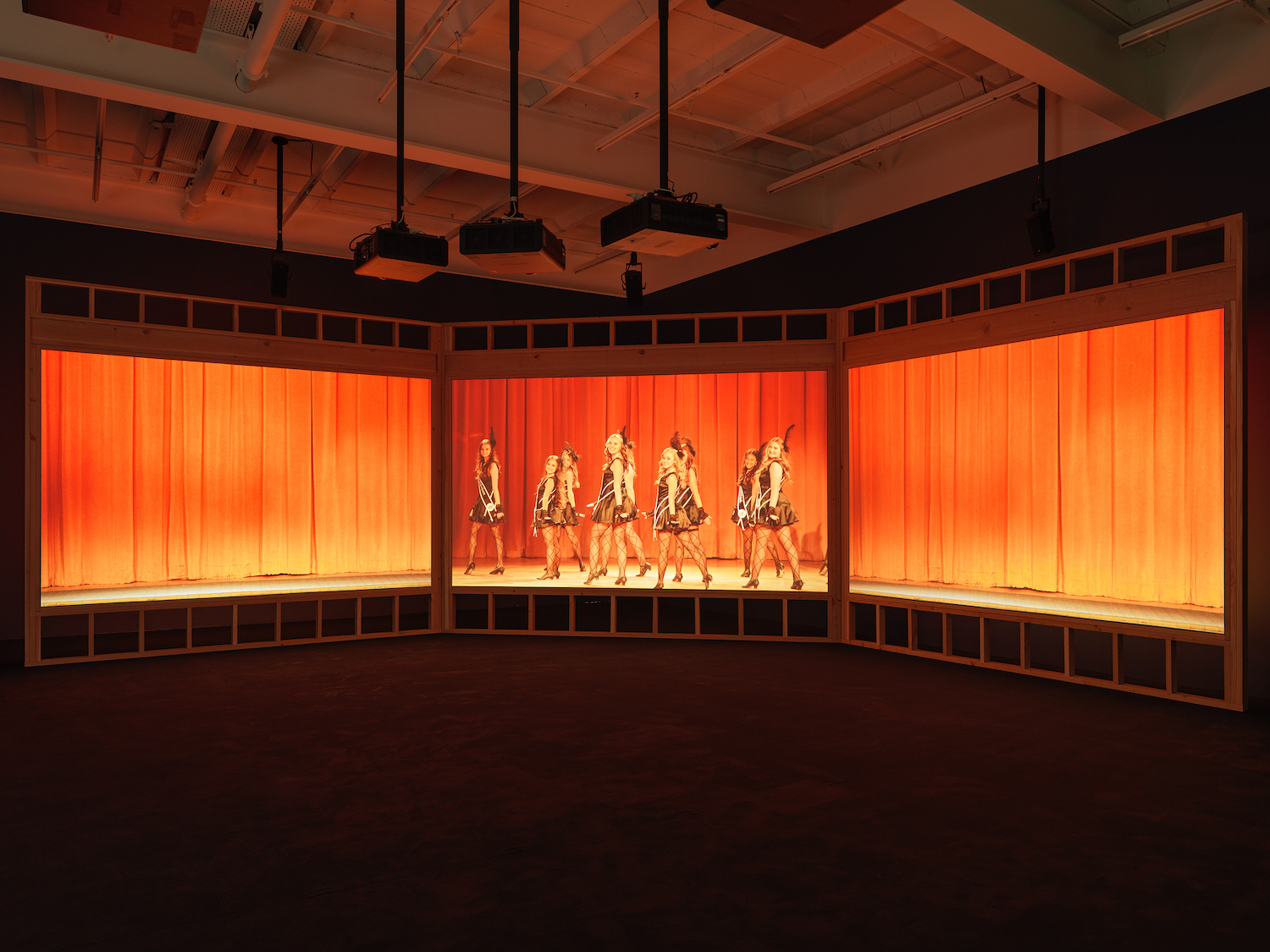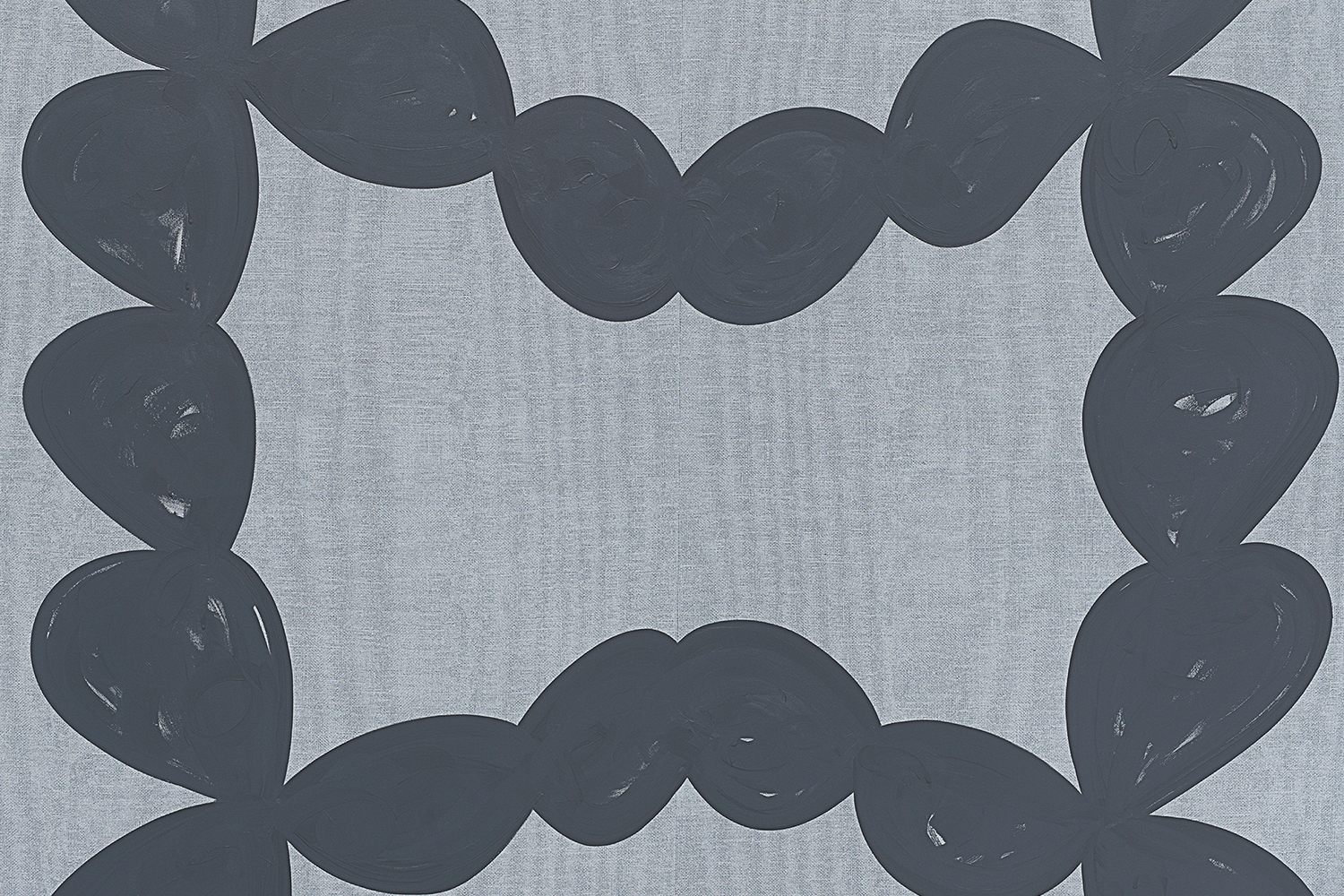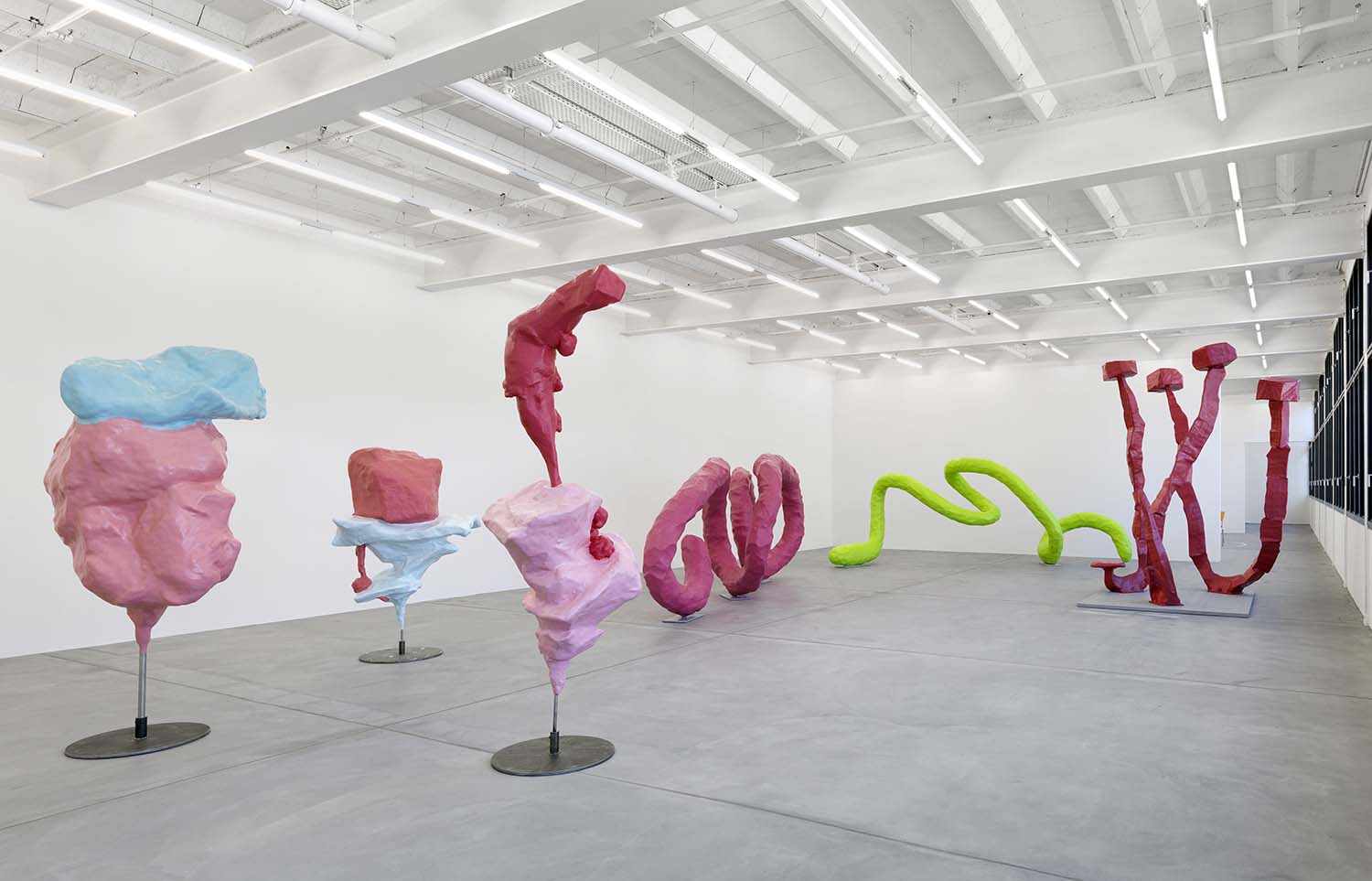Sometimes, at least as a young person, you’re confronted with canonical artists that you have never heard of before, and I think there’s no shame in that. So, when I got a call asking whether I would be willing to write about Gerwald Rockenschaub’s show “bass+ (re)modification” at Galerie Eva Presenhuber in Zurich, the first thing I did was Google him. I swiped through an array of flat, colorful paintings and installations that seemed to understand themselves as paintings that inhabit a transcendent space between geometry and depiction.
Entering the show made me a little nervous. Knowing I had to write about it, I was hoping for a sudden revelation when seeing the works in the flesh. What I found were small monochrome rectangles of lacquered MDF placed above and below a thin black line of paint dividing the gallery’s walls, only interrupted by two doors. The exhibition text promises that “the objects experience an enormous expansion and completely transform their surroundings” — an effect I didn’t experience. It’s true that the works feel like they were made specifically for the space they’re shown in as they fill each wall from start to end, but to claim that they deeply change the perception of that space is a bit much. Looking at the exhibition I am not at all sure that altering the space was Rockenschaub’s intention. The piece even feels affirmative of the visually stripped down white cube it is placed in, as it highlights its emptiness. Seeing that this spatial installation is offered for sale cut-up into little digestible pieces (all titled bass+ (re)modification, 2024) doesn’t help either.
While Rockenschaub’s earlier works often came in very appealing finishes of shiny lacquer and glossy acrylic, this show is produced using only matte paint. The black line is applied directly on the wall, and the rectangles, which come in all sorts of colors, are hung above and below as three-dimensional shapes. Compared to exhibitions such as “Swing” at Kunsthalle Bern (2008), in which Rockenschaub made good use of the museum’s distinct architectural features and seemed to conceptually engage with the specific materials he used, this new spatial intervention at Galerie Eva Presenhuber feels a little more frugal.
Knowing from my Google research that Rockenschaub is also an electronic musician and DJ — he has released music on the record label Villa Magic Records, run by Sylvie Fleury and John Armleder, and co-founded the Viennese club the audioroom in 1995 — I am tempted to read these visual works not as purely abstract but as musical notes, elements of a composition. The concept of composition in both painting and digitally produced music overlaps in “bass+ (re)modification.” The show resonates with a rhythmic quality, almost as if each shape and color were a beat or note of a track, the black line the timeline of a song echoing in the almost empty gallery space. This artistic approach becomes particularly interesting in a Swiss context, where one might compare it to Minimalism à la Olivier Mosset.
This seems to be the precise strength of Rockenschaub’s work: balancing the fine line between abstraction and figuration, and invigorating what could be seen as a deadly serious (maybe boring) minimalist sensibility with a unique sense of humor for those willing to see it.

